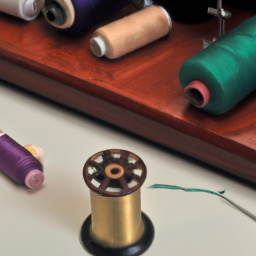
The History of Sewing Needles

Sewing needles have played a vital role in human history, serving as a crucial tool for countless generations. From the earliest needles made of bone to the modern high-tech varieties, they have continuously evolved to meet different sewing needs. Let’s take a journey through time to explore the fascinating history of sewing needles.
Earliest Origins
The first evidence of sewing needles dates back to prehistoric times. These early needles were crafted from natural materials like bone, antler, and ivory. They were typically quite large and used for tasks such as leatherwork and stitching animal hides together.
Ancient Civilizations
In ancient civilizations, such as ancient Egypt and Mesopotamia, needles became smaller and more refined. The first metal needles, primarily made of copper, appeared during this time. These developments allowed for finer and more intricate sewing work and expanded the range of fabrics that could be handled.

The Middle Ages
During the Middle Ages, needle-making became an important industry in Europe. Needles were produced by highly skilled craftsmen and were made from iron or steel. This era also saw the introduction of the eye of the needle, which made threading much easier. Increasingly, needles were essential tools for tailoring garments and creating elaborate textiles.
Industrialization and Advancements
The Industrial Revolution in the 18th century brought significant advancements in needle production. Innovations led to the mass production of needles, making them more affordable and widely accessible. Over time, needle manufacturing techniques improved, leading to the creation of sharper, smoother, and more durable needles.

Present Day
In modern times, sewing needles are crafted from high-quality stainless steel. They come in various types and sizes, specially designed for different sewing techniques and materials. From hand sewing to machine sewing, needles have become indispensable tools for professionals and enthusiasts alike.
Conclusion
spans thousands of years and reflects human ingenuity and the need for crafting and creating fabric-based goods. From their humble origins in bone to the finely crafted steel needles we use today, these tiny tools have played a remarkable role in shaping the way we fashion textiles and garments.




